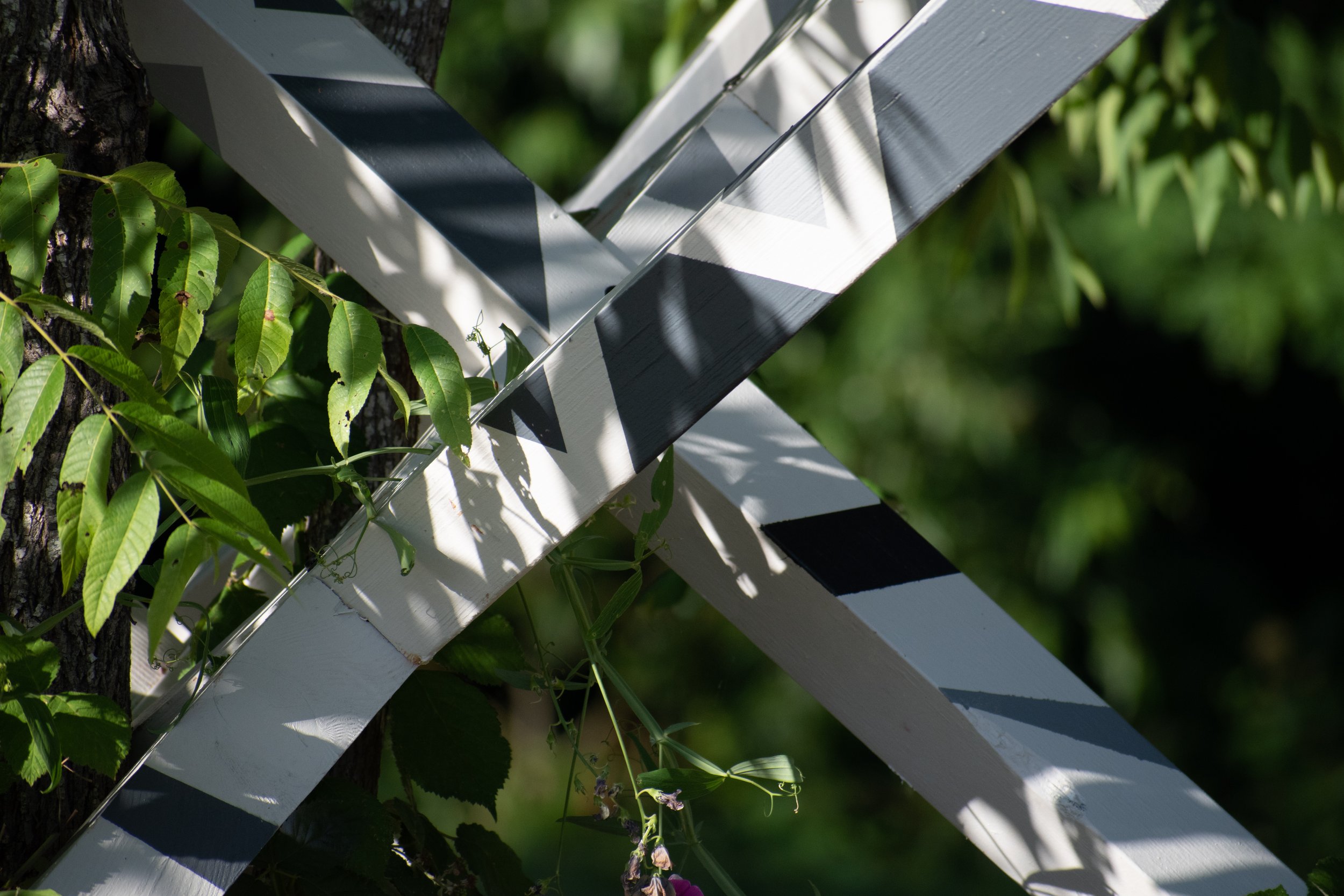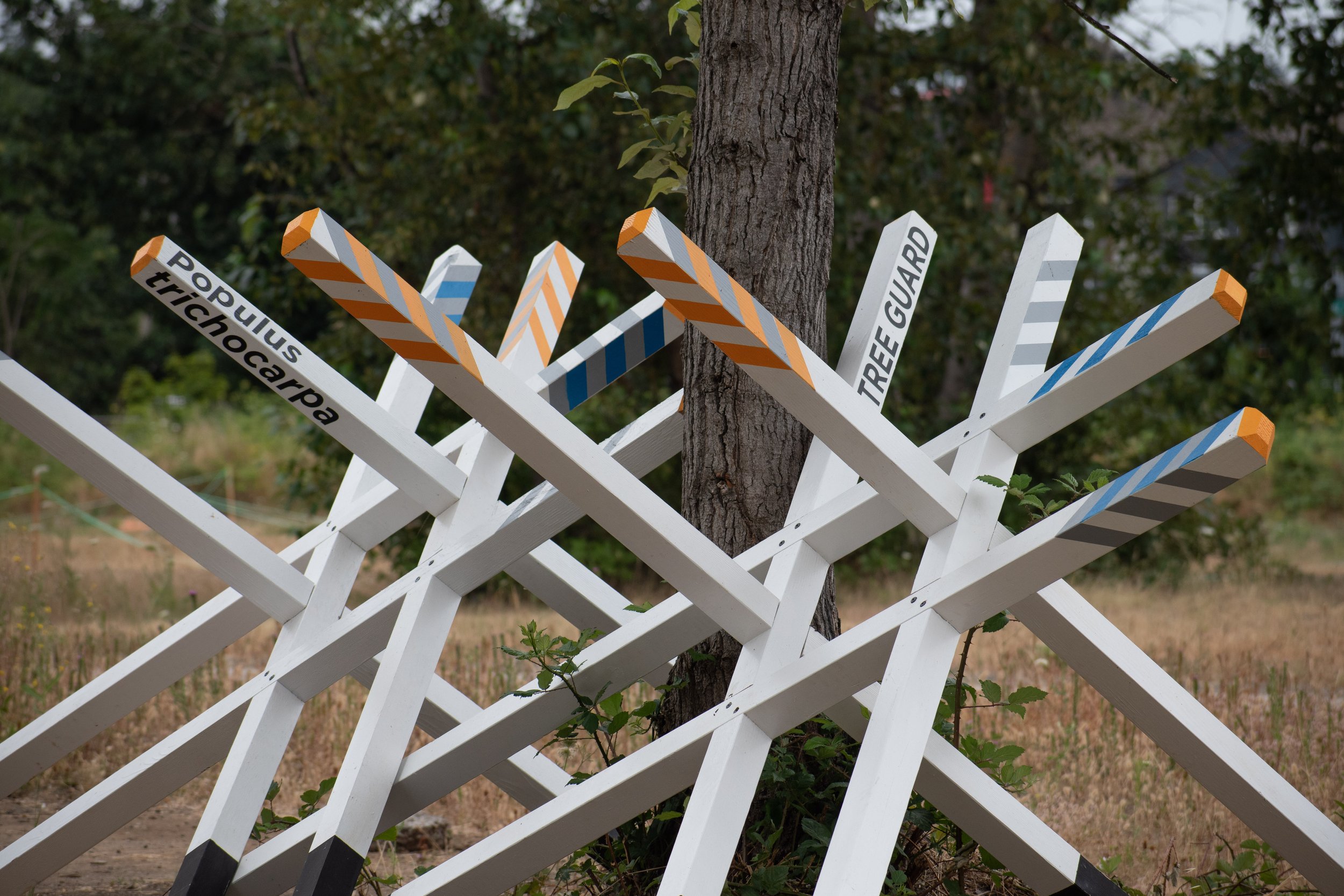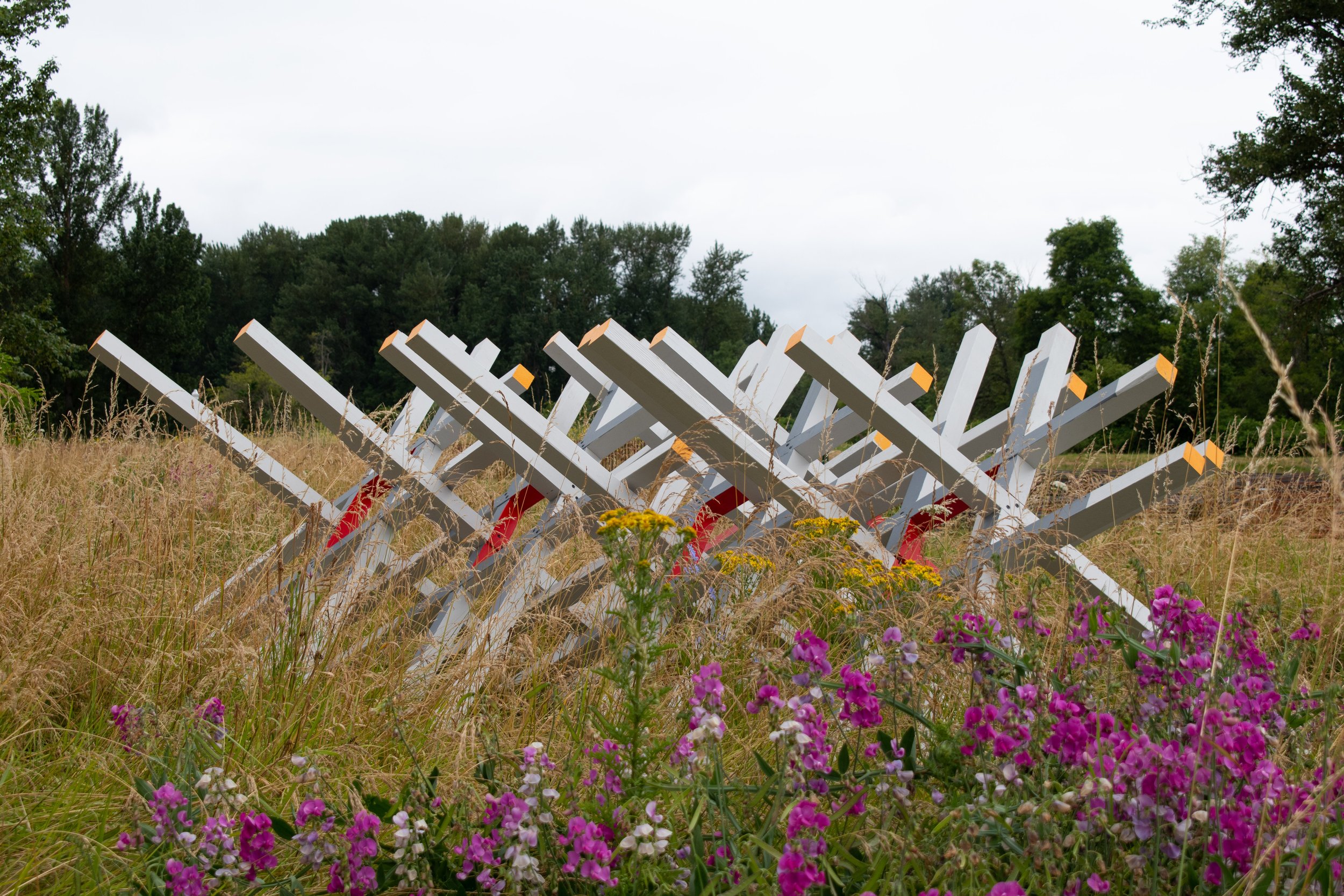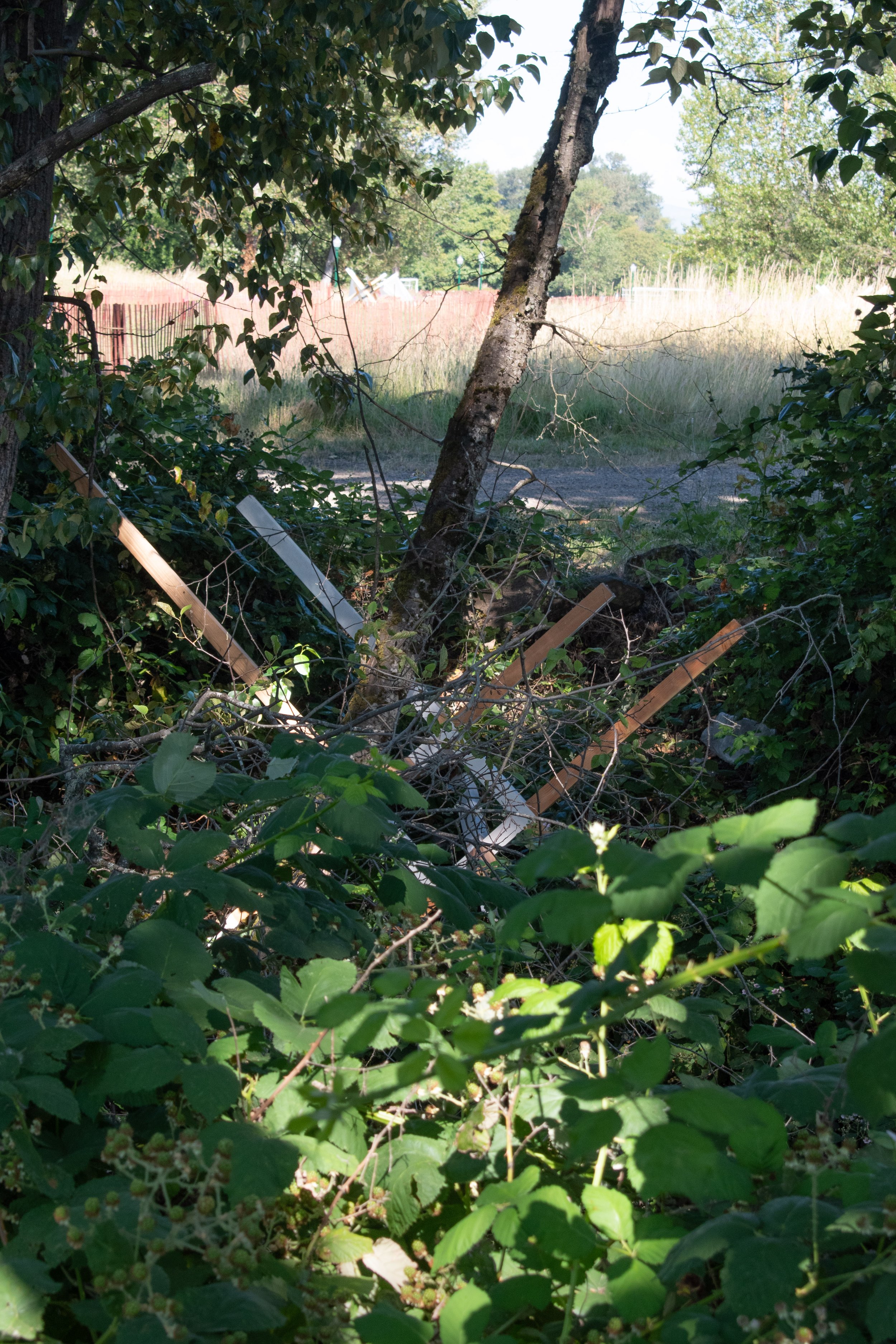TREE GUARD X
“Protect to Study; Study to Protect,” the research-forest mantra of artist Jack K. Byers aptly captures the principal motivation of the Tree Guard X project. The series of installations are pop-art inspired reinterpretations of the ubiquitous urban steel tree guard. However, the construction, form, and material are inspired by vernacular timber-frame tradition, 20th century military defense technology, and contemporary high-visibility construction/destruction barriers. The graphic design is intended to capture human attention and imagination, as well as the critical value of the tree within the tree guard. The colorway, typography, and graphic symbols of each individual tree guard communicates the story of the tree, the site context, and the greater landscape in which the tree guard is installed.
Collaborators: David Buckley Borden and Ian Escher V. with fabrication support from Michael Geffel, Jessica Mitchell, Nancy Silvers, and Keith Stanley.
This work is funded by the Fuller Initiative for Productive Landscapes at the University of Oregon, and the Oregon State University Foundation’s Andrews Forest Fund.
FIRST AID GUARD
The city of Eugene is similar to many places in North America, in that post industrial brownfields are often capped with a thin veneer of responsibility (a lean legal layer of soil from the local gravel company) only to gain interest in the era of urban redevelopment.
RAZZLE DAZZLE GUARD
The city of Eugene is similar to many places in North America, in that post industrial brownfields are often capped with a thin veneer of responsibility (a lean legal layer of soil from the local gravel company) only to gain interest in the era of urban redevelopment.
TWO UP TREE GUARD
Stationed near the lovingly titled, “mound of toxic soil”, this pair of tree guards envelope a black cottonwood (Populus trichocarpa). The cottonwood stands at the entrance of the post-industrial “pole yard” and is one of the few native tree species able to grow in this dross landscape.
HEAT GUARD
This black cottonwood (Populus trichocarpa) took refuge in the compacted, industrial waste-laden soils of this temporary parking field. Dying from the top down, this tree bares the scars of the heat dome that hovered over the Pacific Northwest in the summer of 2021. However, living true to M.I.A’s montra, “live fast, die young”, this “rock star tree” continues to rock on with flashy heat-gradient style.
MEADOW GUARD
After years of gravel extraction, construction debris dumping, and installation of gas lines, the soils of this landscape are a mosaic of poor conditions. These tree guards sit within an urban wet meadow; the soils are so compacted that water is unable to infiltrate. The seasonal standing water has changed the plant composition in this meadow, and provides water for animals living within this landscape.
COMMUNITY CREEK GUARD
One of the most rewarding aspects of designing landscape installations for public space is community engagement. This bitter-sweet experience can highlight both the strengths and weaknesses of a designer’s specific site-specific work.
A local Eugene community member believed this tree guard’s narrative would be more robust if it were protecting the adjacent polluted mill race. Into the drink it went, until days later when another community member offered to help remove it from the mill race and reinstall it in the nearby meadow.













